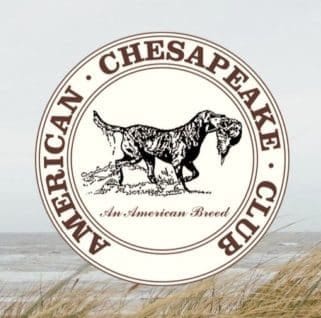Chesapeake Bay Retrievers: DQ for Dewclaws? The current situation in countries that have laws forbidding the removal of dewclaws (front and rear). In no way does this article suggest that dogs be eliminated from our gene pool because they had rear dewclaws. The JBEC and the ACC Board want members and breeders to be aware of legislation in other countries (most of Europe), and the possibility that, in the future, laws may be passed in the United States forbidding cropping, docking, and dewclaw removal.
Rear Dews and Don’ts
The first AKC-approved Chesapeake Bay Retriever Standard in 1918 listed six disqualifications, including: “Dew claws, undershot, overshot, or any deformity.” This disqualification remained the same through the 1933 Standard revision. However, in 1963, changes were approved that remain part of the current (1993) Standard. Dewclaws were given their own line and clarified to indicate rear only. Since 1963, DQ number three simply states: “Dewclaws on hind legs.”
Reviewing past publications, there is little information about the intent behind rear dewclaw disqualification. Janet Horn, in *The New Complete Chesapeake Bay Retriever, addresses all-breed disqualifications in general and states: “The seven disqualifications in our Standard were first laid down in 1936, and at that time, I was told by one who had worked on the Standard Committee in the 1930s, these items were made disqualifications because they were serious problems in the breed. If they are now found only infrequently it is a tribute to the emphasis implied by the potential for disqualification. We need to retain these disqualifications, for anything that has previously been a problem in the breed can become one again if we do not keep alert and guard against it.”
The incidence of rear dewclaws and their mode of inheritance in Chesapeakes is relatively unknown, as most breeders and owners do not actively track or relate the occurrence. Puppy buyers or breeders in the US don’t usually think or find it necessary to ask themself the question of what can disqualify my breed from a show. The Breed Standard makes no mention of the removal of rear dewclaws being a disqualification, just that they should not be allowed, so it is near impossible to track, anecdotally, in adults. Currently, there is no genetic testing available for the occurrence of rear dewclaws and no research planned for the future. In the upcoming breed health survey, the question of rear dewclaws will be addressed to have better information available about the prevalence in the breed and its potential genetic transmission.
In the United States, CBRs with dewclaws removed are allowed in the conformation ring. So, why is this a concern? The American Chesapeake Club is the authority over the official AKC Standard, which is used not only in the US, but also in countries governed by the FCI (Fédération Cynologique Internationale). CBRs shown in conformation classes in these countries are held to this Standard. Canada and Great Britain have written their own Chesapeake Bay Retriever Standard based on the ACC version. Canada has only six disqualifications, with the rear dewclaw DQ eliminated. Great Britain has no DQ for Dewclaws included in their version and no mention of dewclaws at all.
DQ for Dewclaws in other countries? Other countries vary widely in their laws that regulate or outright prohibit, docking, cropping, and the removal of both front and rear dewclaws. For example, in Canada, a number of provinces have banned the procedures, and the Canadian Veterinary Medical Association has stated (2018) that they are formally opposed. In the United Kingdom, removal of dewclaws is permitted without anesthesia only if the puppy’s eyes have not opened or with anesthesia (only by a licensed veterinarian) if the eyes have opened. In some countries, removal is only permitted if it becomes medically necessary for trauma or therapeutic reasons. Groups in the US are lobbying for similar bans of cropping, docking, and dewclaw removal. If such laws are ever approved, the ACC would likely be mandated to revise our Breed Standard.
The conflict is:
- Rear dewclaw removal is illegal in some countries outside the US
- Rear dewclaws are a disqualification according to the ACC (and FCI) official Breed Standard
National purebred dog registries in many foreign countries require confirmation certification from a qualified judge before a dog or bitch can be bred or any litters registered. CBRs with rear dewclaws present are disqualified under the FCI Standard and may not be able to obtain this certification in countries that specifically prohibit dewclaw removal. As the breeding stock is much more limited outside the US, this becomes a concern for CBR fanciers abroad.
Prior to these laws being enacted in other countries, breeders had no real reason to record information on puppies born with rear dews. However, CBRs are sold to buyers and being bred in countries where removing rear dewclaws is an issue. US breeders can help foreign breeders by recording and sharing information with them on rear dewclaws that may be present in their lines. In addition, when selling dogs, bitches, or semen outside the US, the specific laws addressing dewclaw removal in the destination country should be discussed.
Judges Breeder Education Committee – February 2021
*The New Complete Chesapeake Bay Retriever by Janet and Dr. Daniel Horn. Howell Book House, NY, NY. 1994 p. 32









